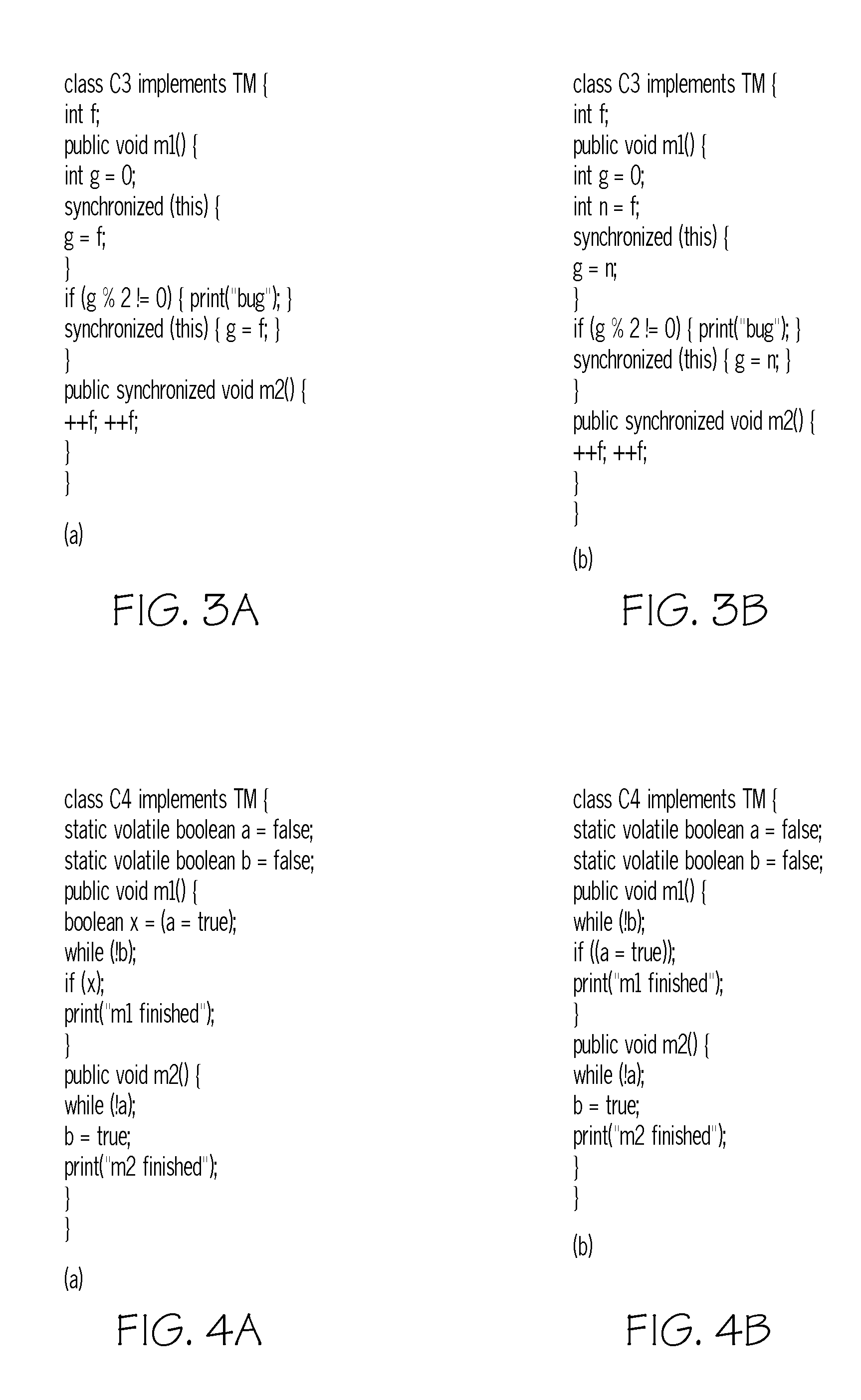Correct refactoring of concurrent software
a technology of concurrent software and refactoring, applied in the field of programming, can solve problems such as unexpected new concurrent behavior of refactored programs, and achieve the effect of convenient implementation and precise correctness results
- Summary
- Abstract
- Description
- Claims
- Application Information
AI Technical Summary
Benefits of technology
Problems solved by technology
Method used
Image
Examples
Embodiment Construction
[0020]It should be understood that these embodiments are only examples of the many advantageous uses of the innovative teachings herein. In general, statements made in the specification of the present application do not necessarily limit any of the various claimed inventions. Moreover, some statements may apply to some inventive features but not to others. In general, unless otherwise indicated, singular elements may be in the plural and vice versa with no loss of generality. In the drawing like numerals refer to like parts through several views.
[0021]Overview of Approach
[0022]This invention presents a systematic approach to ensuring the correctness of commonly used refactorings on concurrent code. We propose to extend the concept of dependence edge preservation, previously used by Schafer et al. to ensure correctness of refactorings on sequential code [28, 29], to the realm of concurrent programs. The newly introduced dependence edges relate language constructs significant to the u...
PUM
 Login to View More
Login to View More Abstract
Description
Claims
Application Information
 Login to View More
Login to View More - R&D
- Intellectual Property
- Life Sciences
- Materials
- Tech Scout
- Unparalleled Data Quality
- Higher Quality Content
- 60% Fewer Hallucinations
Browse by: Latest US Patents, China's latest patents, Technical Efficacy Thesaurus, Application Domain, Technology Topic, Popular Technical Reports.
© 2025 PatSnap. All rights reserved.Legal|Privacy policy|Modern Slavery Act Transparency Statement|Sitemap|About US| Contact US: help@patsnap.com



